ALTERMANCY: Arcana of the Underground
- 30.06.25
- Prototype #2
A Tarot-based Internal & Reflexive Tool
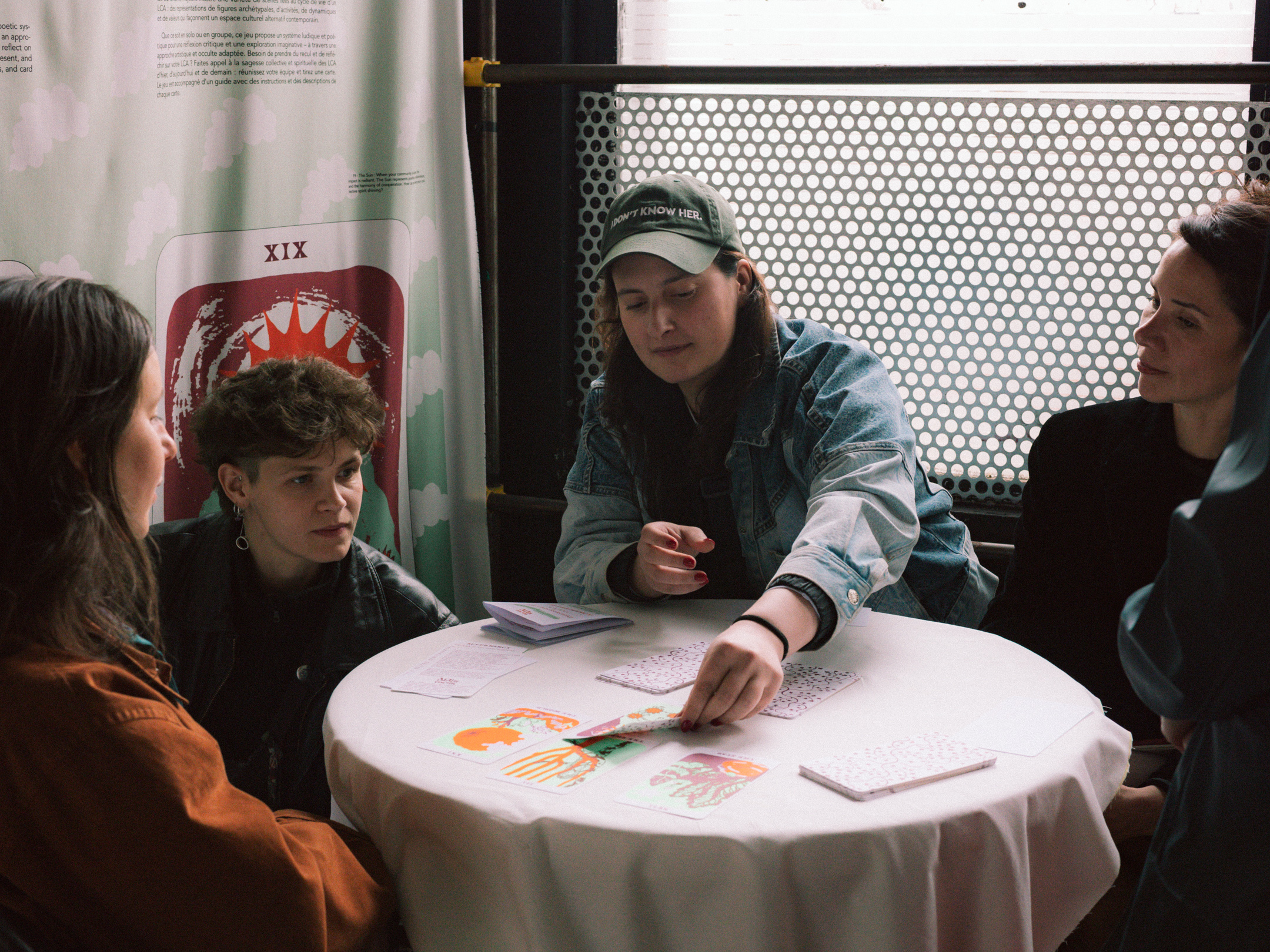
Our exploration of sustainability included experiments with a medium that mirrors the creative and playful nature of alternative cultural practice: a custom tarot deck. ALTERMANCY: Arcana of the Underground is an interpretive and reflective tool through which to explore the complex dynamics of chance and autonomy on which the survival of an ACP depends. Given its association with the occult, we also found tarot to be an appropriate nod to the counter-cultural underpinnings of many of our projects.
The ALTERMANCY tarot deck is a collaboration between members of the Alter-Places team and French artist and illustrator Célia Gaultier, who has collaborated with La Station - Gare des Mines on many occasions. This unique set of 22 “trump” cards depict a spectrum of scenes associated with the “life cycle” of an ACP: representations of archetypal figures, activities, dynamics, and values surrounding a contemporary Alternative Cultural Place.
Whether used alone or collectively, the deck provides a playful, poetic system for critical contemplation and imaginative speculation—through an appropriately artistic and occult lens. Are you needing to step back and reflect on your ACP? Summon the collective, spiritual wisdom of ACPs past, present, and future – gather your team and draw a card. You will find instructions, and card descriptions, alongside the deck.
Elements included in the prototype: 22 major arcana tarot cards, instructions leaflet, storage pockets - for a total of 100 decks
Number of people involved: 6
Competencies required: illustration, printing, storytelling, writing
Partners: Célia Gaultier - illustration and design, Studio Fidele - risograph print of the cards, L’Atelier du Tote Bag - print of the bags
Development time: 7 months
Estimated budget: 5000€
Methodology & Templates
1.Making correspondence between the major arcana and the symbolic figures or elements of ACP
Our first step was to understand how a tarot deck functions, how it's used, and what each card signifies. Because of time and budget limits, we decided to concentrate only on the Major Arcana. Following this, we collaboratively created a table to map correspondences between the traditional tarot cards and symbolic figures or elements from the ACPs.
2.Designing the cards
This work enabled us to get in touch with Célia Gaultier, an illustrator who had already published a tarot deck, to bring our ideas to life through illustrations. We collaborated closely on every element of the cards, drawing on various references. Célia Gaultier then drew a 22-card deck, which was later printed by Studio Fidele (Paris, France) using risography, an eco-conscious printing method that layers ink. The 22 cards come with two introductory cards: a cover for the deck, and a description of the deck along with its production partners. The cards are larger than standard size, which allows for a better appreciation of the illustrated figures on each card while remaining easily portable.
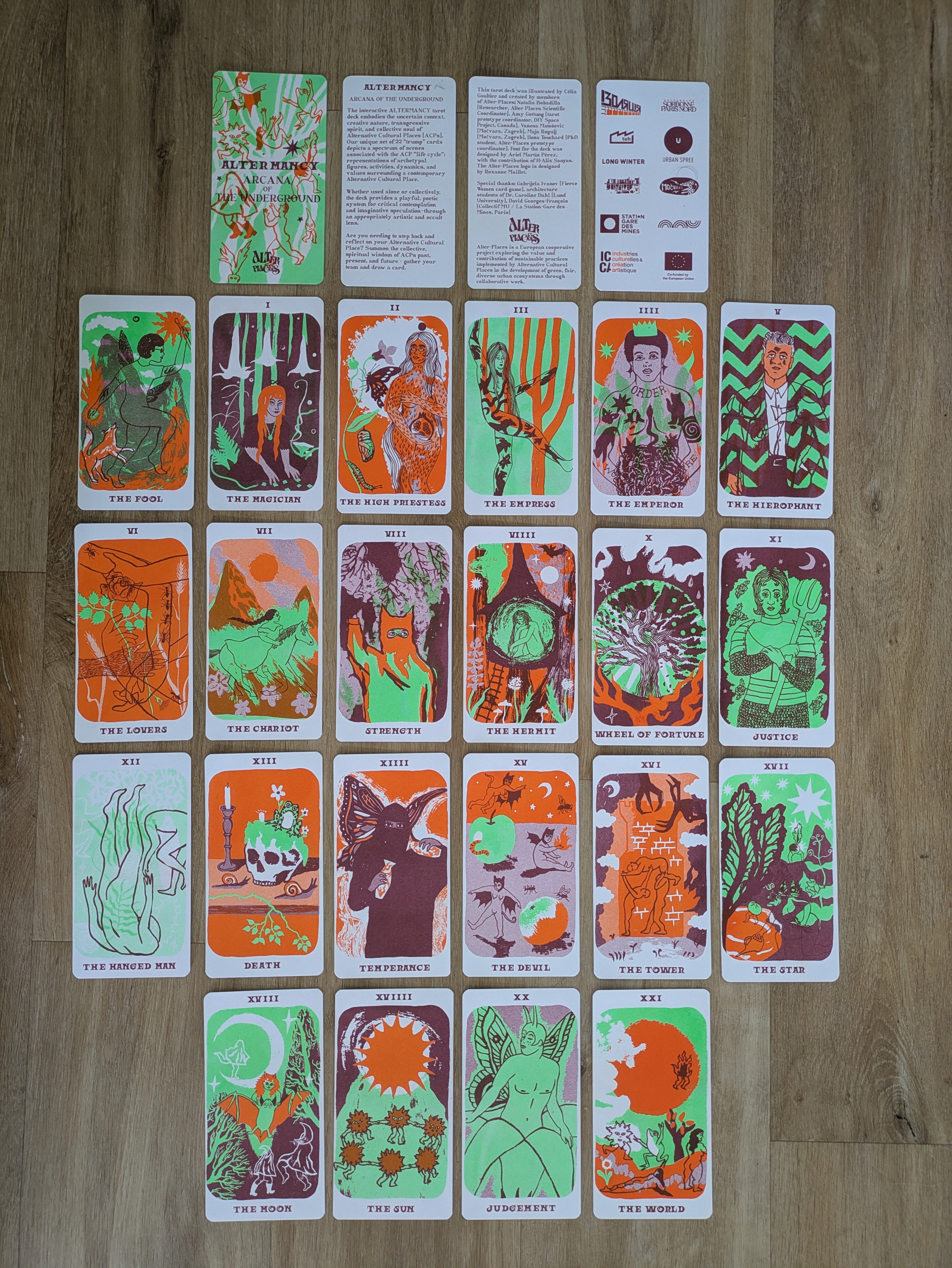
3.Writing and designing the deck instructions leaflet
Concurrently, and to ensure accessibility for all users, a collaborative effort was undertaken to select and test various game modes. This process culminated in the description of three distinct game modes, which are outlined in a leaflet along with the meaning of each card. This leaflet is provided with the game. Regarding the format for the instruction leaflet, we opted for a magic fold designed by L'Artichô, starting with an A3 sheet. This particular fold provides a leaflet that, once folded, is the same width as the cards, which simplifies the packaging process. We chose A3 format for printing, which allowed us to economize on our budget since this size can be readily printed using a standard office printer.
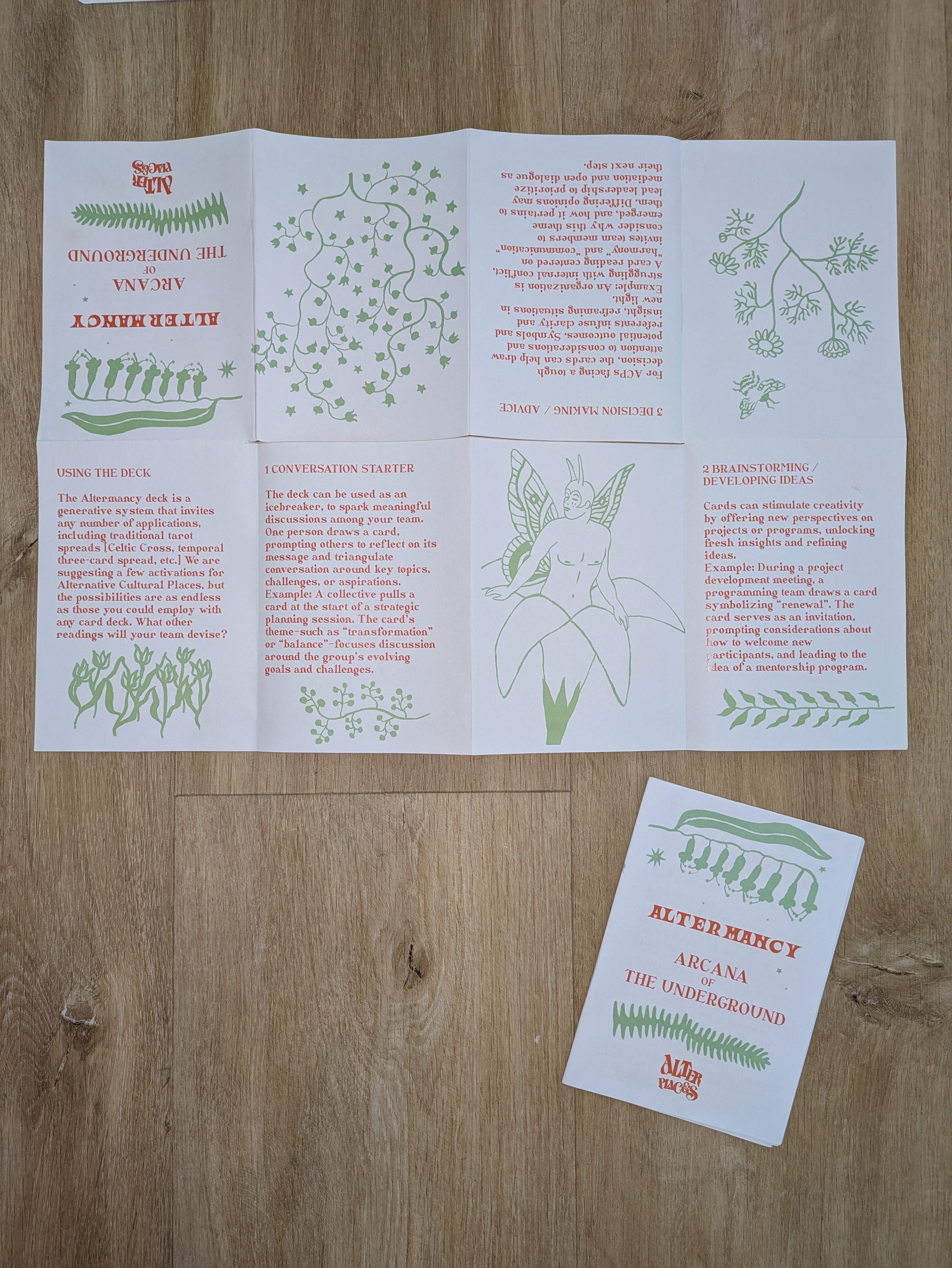
4.Designing storage pouches
To facilitate the distribution and storage of the cards, we partnered with Atelier du Tote Bag to produce custom cotton pouches. These pouches are sized perfectly for the cards (15x20cm) and are adorned with a one-color screen-printed design on the front, displaying both the tarot's name and the project's logo.
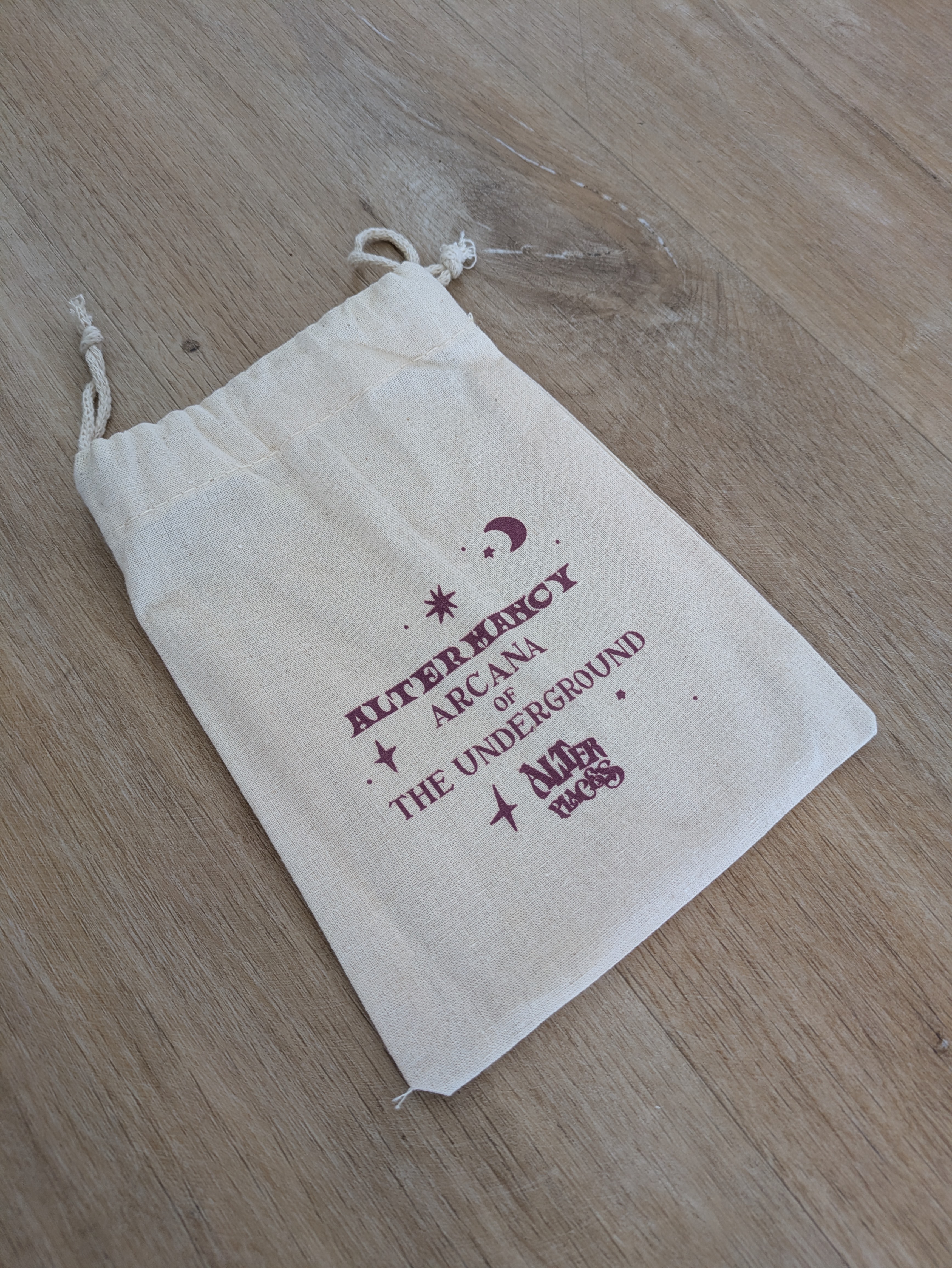
5.Making a collective assembly workshop for the 100 decks
Once all the aforementioned components were collected, the next step was to assemble the 22 cards, the instruction leaflet, and the pouch to prepare the 100 decks for distribution. To achieve this, we arranged a game assembly workshop involving 5 members of the Alter-Places project. Through a dedicated morning of work, we successfully organized the cards in sequence, folded the instruction leaflets, and packaged each complete deck set within its respective pouch.
6.Use scenarios
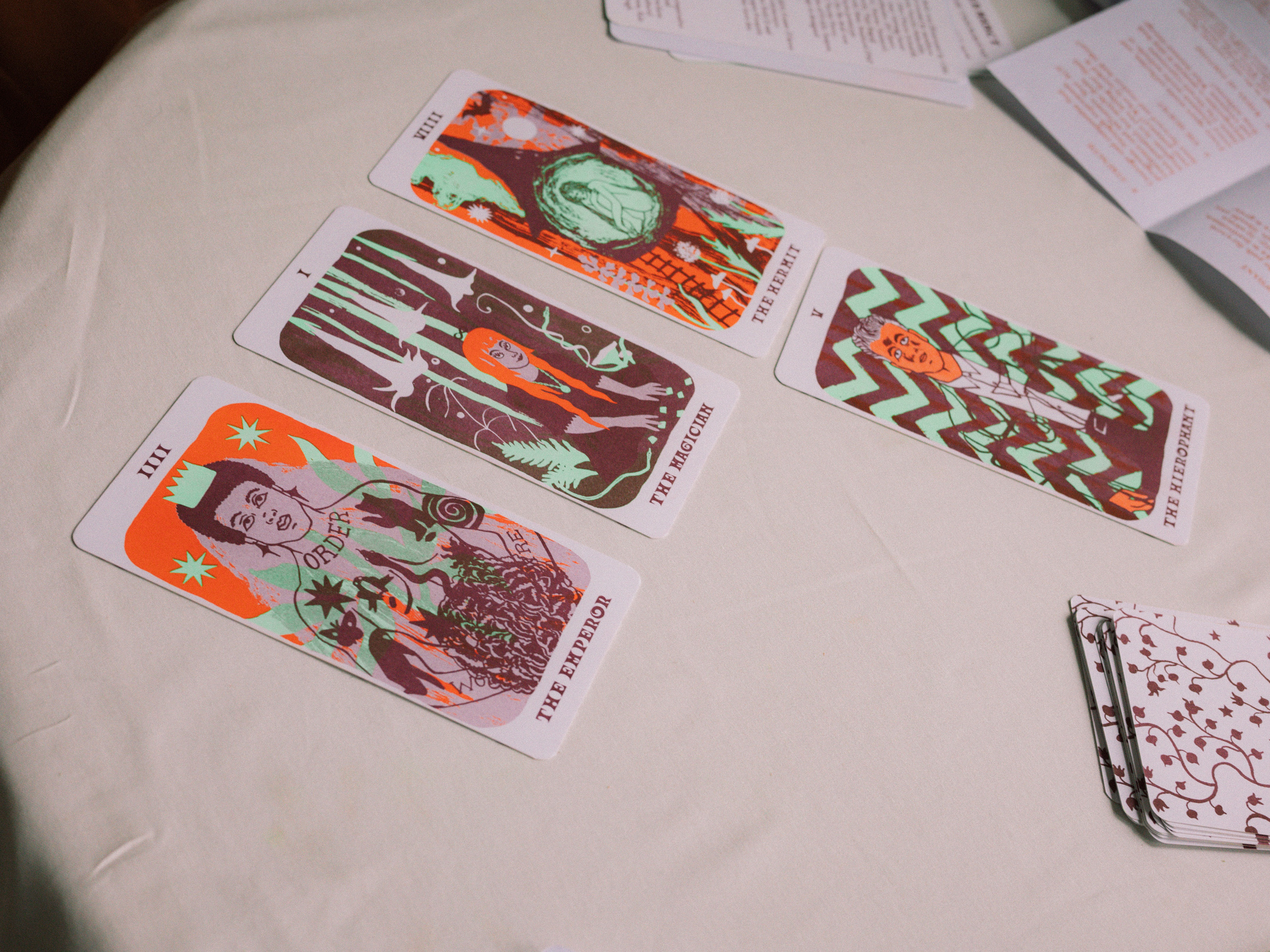
The Altermancy deck is a generative system that invites any number of applications, including traditional tarot spreads (Celtic Cross, temporal three-card spread, etc.). You can play alone or with others by asking a question that will guide the subsequent reading of the cards. We are suggesting a few activations for ACPs, but the possibilities are as endless as those you could employ with any card deck:
Conversation Starter: The deck can be used as an icebreaker, to spark meaningful discussions among your team. One person draws a card, prompting others to reflect on its message and triangulate conversation around key topics, challenges, or aspirations.
Example: A collective pulls a card at the start of a strategic planning session. The card’s theme—such as “transformation” or “balance”—focuses discussion around the group’s evolving goals and challenges.
Brainstorming / Developing Ideas: Cards can stimulate creativity by offering new perspectives on projects or programs, unlocking fresh insights and refining ideas.
Example: During a project development meeting, a programming team draws a card symbolizing “renewal”. The card serves as an invitation, prompting considerations about how to welcome new participants, and leading to the idea of a mentorship program.
Decision Making / Advice: For ACPs facing a tough decision, the cards can help draw attention to considerations and potential outcomes. Symbols and referents infuse clarity and insight, reframing situations in new light.
Example: An organization is struggling with internal conflict. A card reading centered on “harmony” and “communication” invites team members to consider why this theme emerged, and how it pertains to them. Differing opinions may lead leadership to prioritize mediation and open dialogue as their next step.